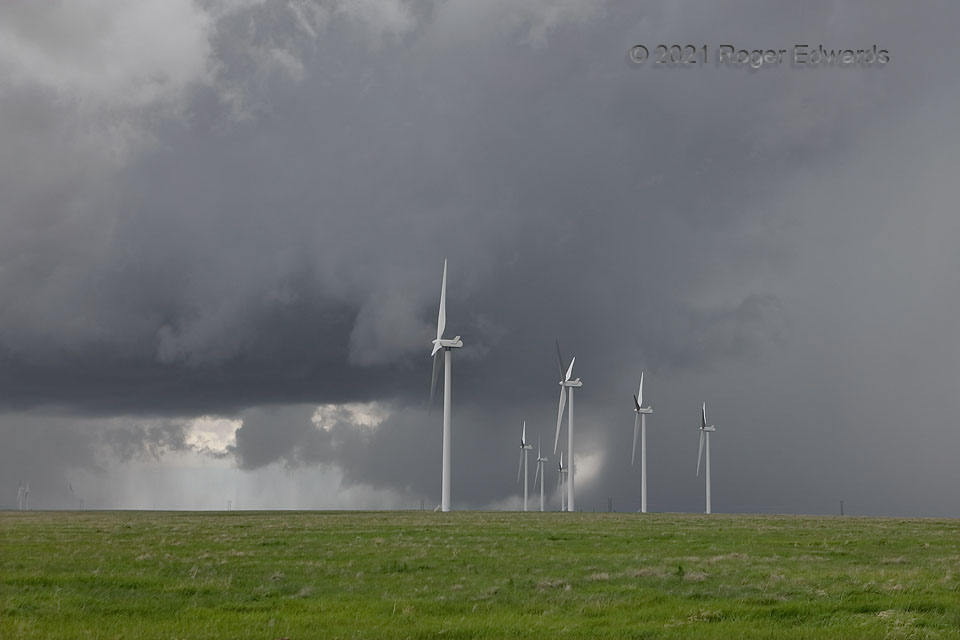After this supercell’s forward-flank core and rain foot shifted northward enough to see the rotating, deeply occluded wall cloud in the distance, I tried to pay very close attention to the area under it, while not losing track of the closer, main updraft base (also rotating, but very slowly at this point). The slightly higher terrain, upon which the wind turbines sat, didn’t help, nor did the wind equipment itself—distracting and obscuring, breaking visual continuity. Yet this was a relative high spot accessible from the highway, and no better view was available nearby. The low and fuzzy base rotated, maybe with brief vortex filaments beneath. The most persistent and suspicious lowering was a persistent, conical feature at right, behind the very tip of the rain foot, seen behind and in between distant middle turbines. The lowering moved right (north) then left (southwest and south), clearly orbiting the north rim of the mesocyclone. Was it tornadic? I can’t tell you for sure. There was just enough terrain obscuration, distance, and continuity interruption by the turbine poles, to keep me from ascertaining more-concentrated rotation in the feature. Wind farms can impede storm spotting! It also occurred in a roadless, remote area with nothing to damage structurally—indeed, little more exists out there than grass, sagebrush, and jackrabbits. Yet the lowering would persist and evolve… [Go to Part 3]
16 NNE Limon CO (23 May 21) Looking SW
39.5127, -103.6218
